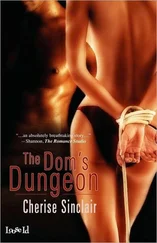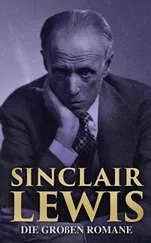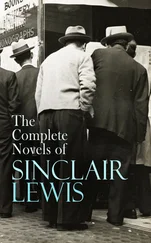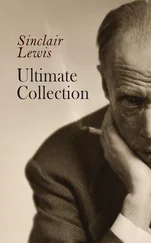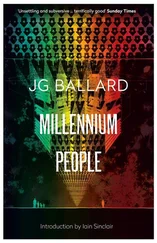The notion of an Aboriginal cricket team proved a rewarding speculation for the hotelier (and former Surrey man) Charles Lawrence, and his partners, the ‘shadowy’ W. G. Graham, and George Smith of Manly. The demand for novelty they stimulated was such that, within ten years, a troop of white Australians followed them over — to the disgust of several elderly MCC members, who felt they had been cozened into wasting time on a cheap fraud. ‘Demm’d fellers can’t be Australian. They ain’t even half-black.’
The 1868 ‘darkies’ drew a large crowd to Lord’s, six thousand of the curious, sportsmen and their ladies — despite the counter-attractions of the Ascot meeting — to watch the Aboriginals face up to a side that included the Earl of Coventry, Viscount Downe, and Lieutenant-Colonel F. H. Bathurst who, statisticians will recall, ‘bagged a pair’, falling twice to the wiles of Johnny Cuzens. King Cole limited himself to half a dozen overs of under-arm lobs, which he bent dangerously, or pitched into the sun — to drop directly on to the stumps.
At the close of play, the Aboriginals put on another kind of show: running the hundred-yard sprint backwards, throwing boomerangs and spears, executing tribal dances, and dodging the cricket balls that young blades were invited to hurl at them.
King Cole spat blood on to a white cloth. The linen absorbed the outline of the stain, a map of his lungs. A nurse folded and removed the soiled towel; but the place was recognized. King Cole was eager to relive his death. He found the infection he needed in cow’s milk; he had to release it. Nodular lesions spread through the weakened tissue. His lungs were paper, patched with paper. They were beyond use. Night sweats, fevers: he melted. They could not look at him. He returned the name they had given him in a triumphant pun: his eyes burnt like coals.
Two weeks after the circus at Thomas Lord’s cricket ground, King Cole lay dead in Southwark. They brought him from Guy’s Hospital to a pauper’s grave in Victoria Park Cemetery, East London; long accepted as a necropolis of the unregarded. They carried him on a board, past the domed scalloped alcove, a cross-section igloo, built from the Portland stone blocks of Old London Bridge; and they aimed him at its twin, across the river, in the far reaches of the park, beyond the cricket grounds. The particular site where they folded King Cole into the earth is now diligently disguised as ‘Meath Gardens’: a light-repelling reservation, amputated from its original host by the twin cuts of Old Ford and Roman Road.
And here, Meic Triscombe — a powerful advocate of Aboriginal Land Rights (‘Land is Life’) — was instrumental in arranging that a hardy eucalyptus tree (sacred to caterpillar dreaming), and supplied courtesy of Hillier’s Nurseries, should be planted by some noted local figure, who was known to be sympathetic to the Cause; and who could be relied upon to conduct himself, and the difficult ceremonies, with dignity — but also with passion, subdued fire. Triscombe thought he knew just such a person. He would not have to travel a million miles to find him. The memory of King Cole would stay forever sharp in Tower Hamlets.
A cricket match would follow on a specially laid synthetic strip, donated by Tru-Bounce (Wanstead). There might be a little low-key television coverage. A quirky, heart-on-the-sleeve account by some local pundit to pitch for the Saturday Guardian . Who lived in the Borough these days? Alun Owen? Andrew Motion? Fredrik Hanbury? Triscombe could call in the favours. He would emerge, rightly, on the international stage, confronting global issues: genocide, torture, acid rain. He’d stuff the greeny yellowy whale-bait on their own patch. Sponsorship, by Qantas, was assured. This was the ‘Qantas Aboriginal cricket tour’. A nice conceit: ‘Qantas’ Aboriginals, presumably living in burnt-out fuselages, and hunting by jet. The ‘souvenir programme’ already credited: Slazenger, Puma, Barclays Bank, Nescafé, Cell Link (suppliers of mobile phones), Wood of Bournemouth (supplier of BMW), TNT Magazine, Benson & Hedges, East Midland Electricity Board, Arcade Badge Embroidery Co., Australian Wool, and Contagious Films. Triscombe’s in-house humour would have to be aimed with great care; some of these jokers could be touchy.
The commemorative match in Victoria Park, between the ‘Qantas’ Aboriginals and Clive Lloyd’s eleven, was a modest affair, a sober success. The bespectacled and ageing panther gathers the ball at extra cover and returns it, straight to the wicket-keeper’s gloves, with an effortless flick. His young teammates do the running for him, giving away the odd ‘overthrow’ on the bumpy daisy-dusted turf. The Aboriginals conduct themselves in the accepted all-purpose style, that could mean a team of cigar-chewing Dutchmen, headhunters with filed teeth, or morally stunted mercenaries going anywhere to chase a krugerrand.
A knot of local black kids, in the tea interval, picked up the rudiments of boomerang throwing: the blade held upright, spun twisting into the wind. They returned the following evening, to drop an incautious grey squirrel from a plane tree; and to watch while it was chewed — then abandoned — by a yelping levy of over-fed pooches.
My son was restless. Cricket was not his game. It was too far away. And too cold an afternoon. I had seen as much as I needed. Conscious of the sacrilege, we set off for home before the game was concluded. I did not witness the end of Clive Lloyd’s brief innings.
VII
In Meath Gardens, off Roman Road, the hands of the clock were edging to attention at midday; a group of fit, dark-skinned young men, in green blazers, stood over a hole in the ground, practising late cuts and cover drives with their rolled umbrellas. A publicity girl from Qantas, who had miscalculated — by one — the number of buttons to leave undone on her starched blouse, was fending off the attentions of the sole representative of the English Press, a papillous ‘stringer’ from the East London Advertiser .
Edith Cadiz, in a startling white raincoat, had detached herself from what she was seeing. She leant against a pollarded English elm, and looked across the insistent wave-pattern of the reclaimed graveyard to the allotments. The dull grass was like a coarse hospital blanket too hastily pulled over a corpse that refuses to shut its eyes. Edith tightened her grip on the Eliot. She ‘heard another’s voice cry: “What! Are you here?” / Although we were not.’ If she had painted this scene she would have omitted herself altogether. She reached for her dark glasses: believing, like a child playing hide and seek, that if she could not see, then nobody could see her. She was no longer an actor in anything she was forced to observe. Men, she decided, could never aspire to play any role but the audience. She remembered St Paul: ‘ Their mouths were like open graves .’ She knew that Triscombe would come, but that is not what she was waiting for. The notebooks were all filled: her presence was no longer necessary. She wanted to read them, one by one, to Triscombe; so that he would be fatally infected. The story would stay with him, and — in time — he would die of it. Gentle, westward-drifting rain lacquered her fine red hair to her skull. She was unaware of it. Let this scene finish. Return once more to the Fournier Street refuge; to Roland’s basement kitchen. The pine table, the red coffee pot. A cigarette. Make a performance of it, pass the burden.
Triscombe’s black Jaguar came through the arched entrance gate, with its weathered heraldic shields, its eroded script, Victoria Park Cemetery 1845; and drew up, shy of the ceremonial site — engine running, windows steamed over. Two council gardeners rested on their spades, waiting for the signal, and calculating the precise amount of overtime they would earn. They had a small side-bet running on whether the eucalyptus would last a month.
Читать дальше




